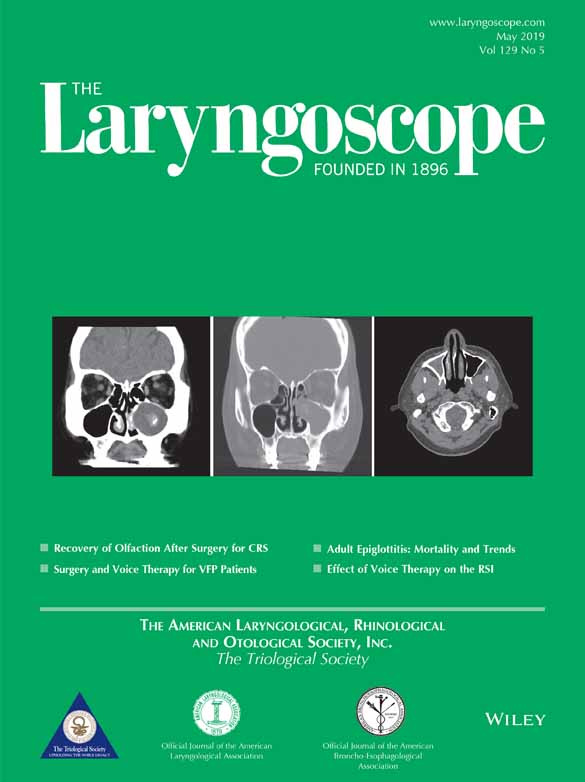Osseous Changes Over Time in Free Fibular Flap Reconstruction
Presented at the American Academy of Facial Plastic and Reconstructive Surgery Meeting at the Combined Otolaryngology Spring Meetings, San Diego, California, U.S.A., April 26–30, 2017.
The authors have no funding, financial relationships, or conflicts of interest to disclose.
Abstract
Objectives/Hypothesis
Evaluate bone resorption in free fibular grafts and document resorption behavior as compared to dentulous and edentulous autochthonous mandibular bone.
Study Design
Retrospective Chart review.
Methods
Postoperative computed tomography images were used to evaluate fibular graft resorption rates and corresponding sites of the dentulous or edentulous mandible. Bone height, width, and cortical thickness were measured.
Results
Eighteen patients underwent fibula free flap reconstruction following resection of a primary head and neck cancer. Mandibular defects were classified using Jewer's classification. The average interval loss of osseous height was 0.23 ± 0.09 mm/yr for fibula flap, 0.55 ± 0.13 mm/yr for dentulous native mandible, and 0.98 ± 0.41 mm/yr in edentulous native mandible. Change in osseous width was 0.19 ± 0.08 mm/yr, 0.55 ± 0.33 mm/yr, and 0.73 ± 0.15 mm/yr, respectively. Rate of superior cortical resorption was 0.33 ± 0.34 mm/yr, 0.35 ± 0.13 mm/yr, and 0.53 ± 0.11 mm/yr in fibula flap, dentulous, and edentulous mandible, respectively. Inferior cortical resorption rates were quantified as 0.30 ± 0.11 mm/yr, 0.35 ± 0.08 mm/yr, and 0.51 ± 0.08 mm/yr.
Conclusions
Fibula free flap reconstruction of the mandible provides excellent functional results and allows for stable outcomes. Bone resorption is significantly lower in fibular graft compared with both edentulous and dentulous mandible. Edentulous bone displays significantly increased rates of atrophy in comparison to the dentulous mandible. This may have implications with regard to long-term viability of both the fibular flap and native mandible. The role of dental restoration on overall osseous stability warrants further research.
Level of Evidence
4 Laryngoscope, 129:1113–1116, 2019




